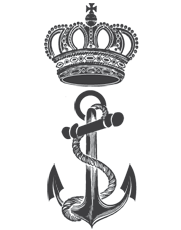| December 31, 2022 |
| Offshore Investment Guide |

Dear ,
Happy New Year 2023
2022 was a breakthrough year for Invest Offshore in Private Placement Programs. We invite you to join us in 2023 to learn about financial engineering through managed buy-sell, bank trading platforms.
|
| PPP TRADE FOR EXAMPLE ONLY |

SMALL-CAP & PING TRADE PROGRAM CASH $5.3M - $100M
CURRENCY US DOLLARS OR EUROS
London, December 2022
Dear Clients and Advisors, SMALL CAP & PING PROGRAM starting from USD/EUR5.3M. Please look the outline of the Small-Cap & Ping Trade Program reported below.
SMALL-CAP & PING TRADE PROGRAM: CASH $5.3M ~ $100M; NO SWIFT BLOCKS
- Corporations and individuals may participate by invitation.
- Only cash is accepted.
- Financial requirements: 5.3M - 100M Cash.
- Currency: US Dollars or Euros.
- Acceptable banks: Any international bank of good standing and reputation, chiefly Top 100 banks in Europe, USA, Canada, and Singapore, plus branch locations of major banks in Asia or the Middle East (e.g., Credit Suisse, Dubai).
- No Russian or Chinese banks.
- Funds don’t move from clients’ accounts. The trader works with the Ping trade program. No SWIFT blocks.
- Program begins with daily ping trades of 120% up to 5-10 banking days with Rolls and Extensions (daily continuously) as the client deems fit.
- Based on the net cumulative value, the program pays NET returns of 120% daily. The NET returns to the client are 120% and COMMISSION shall be deducted.
- Payments are made daily. Clients may withdraw returns at any time, but the principal must remain in their account for the term/duration of the trade.
- Need CIS, BCL, or RWA, KYC, AND the latest Bank Statement stamped and signed by two bank officers in BLUE INK ONLY not older than 3 days!!. There is no set verbiage requirement for BCL/RWA. NO BLOCK, NO SWIFTS. FUNDS STAY IN TOP 100 BANK!
- Trade Contract will follow.
- Money NEVER leaves the client's account. The trader will Ping the account to check if money is in the account. The payout is done this way; once all documents are submitted for instance today and DD is positive equally today or tomorrow, Tuesday, the trade contract emails you the same or the next day. You return the signed contract the next day say Thursday. Trade begins on Friday and the first payment of 120% ROI will be on Monday, Tuesday's trade pays out on Wednesday, and
Wednesday's trade pays out on Thursday... In this manner to the end of your 5-10 banking days.
No projects are necessary. Example details of the $/€5.3 Million Ping Trade Cash Asset program:
- Amount: $/€5,300,000
- Program duration: 10 banking days
- Daily net return: 120% ($/€6,360,000)
- Total return: $/€63,600,000 USD
- Before Deduction of JV Sharing & Commissions.
Documents Required for Ping Trade Cash Asset program:
CIS or KYC Individual or Corporate Email for forms. BCL or RWA (There is no set verbiage requirement for BCL/RWA) We'll send you RWA letter to use. No block, no swifts. Just confirmation of funds by 2 bank officer's with business cards attached signed in blue ink. Also, the latest Bank Statement is stamped and signed by two bank officers not older than 3 days!!!
KYC NOT OLDER THAN 3 DAYS ALSO.
Yes, no swift, no blocking, no MT 799. Funds stay in account. Simple. Top 100 major Banks only!!
You can use any KYC INDIVIDUAL OR CORPORATE or CIS we SEND FILLING OUT THE RWA we SEND WITH BCL/RWA CONFIRMATION OF FUNDS BY 2 BANK OFFOCERS, SIGNED IN BLUE INK BY BOTH BANK OFFICERS. Accounts will be ping to check daily balances. No blocking. No swifts. Simple 10 day trading at 120% a day. Roll over leave 5.3M in and profits or take them out and continue after 10 days keep going. 5.3M to 100M. Must be 5.3M to 100M amounts. Contact me with required docs immediately.These small caps
fill up fast!!
|
| World Bank Compliance and Vetting |

Our compliance officer is an Intermmediary at a Consulting firm who works for the World Bank he has been through Compliance & Vetting through the World Bank. This differenciates us from the regular salesmen broker peddling a service they know little about, not veresed or educated in the SEC Program. Please deal with a Certified Professional who works through licensed SEC Series 7 Traders. There are many Charlatans in this business that will get them reported & Blacklisted Worldwide.
The handful of Platform Traders all communicate with one another and maintain lists with one another to guarantee their outrageous incomes they generate. The system works.
Our group is SEC "LICENSED" Series 7 Traders with over 500 years of experience in all market SEC Series 7 trades, Bond Trades, PPP, SBLC, SURETY BONDS, who are Market Makers with Bank Associates in Top 10 Banks World Wide to quickly obtain and completly safe by Market Regulations any and all Financial Transactions & Instruments for your funding projects & Company's long term needs & objectives.
NOTE:
Any and all upfront questions to do, to show, to prove Licensed Traders performance or without an official engagement to us with a submitted NDNC, IMFPA, KYC, POF, BANK STATEMENT, 2 Banker Business cards with Blue Ink signatures & A PASSPORT submitted upfront will be considered and treated by the Traders as SOLICITATION an offensive SEC Security & Exchanges Commission infraction punishable to be reported. AN ENGAGEMENT NDNC & IMFPA AGREEMENT MUST ALSO BE SIGNED BY INTERMMEDIARY,
INVESTOR, BROKER/S, AND ALL PARTIES ON BOTH SIDES OF THE TRANSACTION BEFORE COMMENCING. AFTER COMPLIANCE ALL QUESTIONS WILL BE ANSWERED. YOU WILL BE GIVEN A CONTRACT TO TRADE BY THE PROGRAM TRADER TO REVIEW & LOOK OVER THEN YOU CAN DECIDE TO MOVE FORWARD OR NOT. QUESTIONS WILL ALL BE ANSWERED ATVTHAT MEETING WITH THE TRADER.
WE TRADE WITH SEC LICENSED TRADERS who Trade BONDS, PPP, MTN's MEDIUM TERM NOTES, STAND BY LETTERS OF CREDIT, SBLC, CASH, BG, BANK GUARANTEES, STRIPS, CERTIFICATE OF DEPOSIT, LETTERS OF CREDIT, LONG TERM NOTES, PROMISSORY NOTES, GOLD, GOLD BACK CERTIFICATES, OTHER GOVERNMENT BONDS, RAILROAD BONDS,OFFSET POLICIES, IN GROUND & ABOVE GROUND PROPERTY ASSETS, IMF BONDS, JAPANESE BONDS, PPE EQUIPMENT, GEMS, EMERALDS & OTHER PRECIOUS STONES, CMO'S, SKR'S, SAFE KEEPING RECEIPTS, GOLD,
DIAMONDS, PRECIOUS STONES, ARTWORK, MINES (WEST AFRICA/GHANA), RESORTS, REAL ESTATE, MOU, LINES OF CREDIT, LEASED INSTRUMENTS (2B +), ASSET OR CASH BACKED INSTRUMENTS, ETC.
|
| History of Private Placement Programs |

By 1961, the plans adopted at the Bretton Woods Convention of 1947 were succeeding beyond anyone’s expectation, proving that Keynes was right. Unfortunately, Keynes was also right in his prediction of a world monetary crisis. It was brought on by a lack of sufficient currency (U.S. dollars) in world circulation to support rapidly expanding international commerce. The solution to this crisis lay in the hands of the Kennedy Administration, the U.S. Federal Reserve Bank and the Bank
of International Settlements. The world needed more U.S. dollars to facilitate trade. The U.S. was faced with a dwindling gold supply to back such additional dollars. Printing more dollars would violate the gold standard established by the Bretton Woods agreements. To break the treaty would potentially destroy the stable core at the centre of the world’s economy, leading to international discord, trade wars, lack of trust and possibly to outright war. The crisis was further aggravated by the
fact that the majority of the dollars then in circulation was not concentrated in the coffers of sovereign governments, but, rather in the vaults or treasuries of private banks, multi-national corporations, private businesses and individual personal bank accounts. A mere agreement or directive issued by governments among themselves would not prevent the looming crisis. Some mechanism was needed to encourage the private sector to willingly exchange their U.S. Dollar currency holdings for some
other form of money.
The problem was solved by using the framework of a forfeit finance a method used to underwrite certain import/export transactions which relied upon the guarantee or aval (a form of guarantee under Napoleonic law) issued by a major bank in the form of either documentary or standby letters of credit or bills of exchange which are then used to assure an exporter of future payment for the goods or services provided to an importer. The system was well established and understood by
private banks, governments and the business community world wide. The documents used in such financing were standardised and controlled by international accord, supported by well established international law, and best of all, administered by the members of the International Chamber of Commerce (ICC) headquartered in Paris.
There would be no need to create another world agency to monitor the system if already-approved and readily available documentation, laws and procedure provided by the ICC were adopted. The International Chamber of Commerce is a private, non-governmental, worldwide organisation, that has evolved over time, into a well-recognised, organised, respected and, most of all, trusted association. Its members include the world’s major banks, importers, exporters, merchants, and retailers who
subscribe to well-defined conventions, bylaws, and codes of conduct. Over time, the ICC has hammered out pre-approved documentation and procedures to promote and settle international commercial transactions.
In the ICC and forfeit systems lay the seeds of a resolution to the looming crisis. Recycling the current number of dollars back into world commerce would solve the problem by avoiding the printing of more U.S. dollars and would leave the Bretton Woods Agreement intact. If currency, dollars, could be drawn back into circulation through the private international banking system and redistributed through the well known “bank ripple effect”, no new dollars would need to be printed, and
the world would have an adequate currency supply. The private international banking system required an investment vehicle which could be used to access dollar accounts, thereby recycling substantial dollar deposits. This vehicle would have to be viewed by the private market to be so secure and safe that it would be comparable with U.S. Treasuries which had a reputation for instant liquidity and safety. Given the “newness” of whatever instrument might be created, the private sector would prefer
to exchange their dollars for a “proven” instrument : U.S. Treasuries, but selling new Treasury issues to the world would not solve the problem. In fact, it would exacerbate the looming crisis by taking more dollars out of circulation. The world needed more dollars in circulation.
The answer was to encourage the most respected and creditworthy of the world’s private banks to issue a financial instrument, guaranteed by the good faith and credit of the issuing bank, with the spectre of support from central banks, IMF and Bank of International Settlements. The world’s private investment and business sector would view new investments issued in this manner as “safe”. To encourage their purchase over Treasuries, the investor yield on the new instruments would have
to be superior to the yield on Treasuries. If the instruments could be viewed as both safe and providing superior yields over Treasuries, the private sector would purchase these instruments without hesitation.
The crisis was prevented by encouraging the international private banking sector to issue letters of credit and bank guarantees, in large denomination, at yields superior to U.S. Treasuries. To off-set the increased “costs” to the issuing banks due to the higher yields accompanying these prime bank instruments, banking regulations within the countries involved were modified in such a way as to encourage and/or allow the following :
- Reduced reserve requirements via off-shore transactions.
- Support of the programme by the central banks, World Bank, IMF and Bank of International Settlements.
- Off-balance sheet accounting by the banks involved.
- Instruments to be legally ranked “para passu” (on the same level) with depositors’ funds.
- The banks obtaining these depositor funds would be allowed to leverage these funds with the applicable central bank of the country of domicile in such a way as to obtain the equivalent of federal funds at a much lower cost. When these “leveraged funds” are blended with all other accessed funds, the overall blended rate cost of funds to the issuing bank is substantially diminished, thus off-setting the high yield given to attract the investor with substantial funds to
deposit.
The bank instruments offered to investors were sold in large denominations (often $100 million) through a well-established and very efficient market mechanism, substantially reducing the cost of accessing the funds. The reduced costs offset the higher yields paid by the issuing banks.
MULTI-USE INSTRUMENT
Major commercial banks soon came to realise that these instruments could serve as more than a “funds recycling and redistribution tool”, as originally envisioned. For the issuing bank, they could provide a means of resolving two of the banker’s major problems : interest rate risks over the term of the loan, and, disintermediation of depositor funds. Bankers, now for the first time, had available a reliable method of accessing large amounts of money in a very cost-efficient manner.
These funds could be held as deposits at a predetermined cost over a specific period of time. This new system to promote currency redistribution had also given private banks a way to pass on to third parties the interest rate and disintermediation risks formally borne by the bank.
The use of these instruments providing instant liquidity and safety has worked amazingly well since 1961. It is one of the principal factors which has served to prevent another financial crisis in the world economies.
In recent years, smaller banks not ranked among the top 100 have been issuing their own instruments. Considering the dollar volume and the number of instruments issued daily, the system has worked extremely well. There have been few instances where a prime bank has had financial problems. In all cases, the central bank of the G-10 countries concerned and the Bank of International Settlements have moved quickly to financially stabilise the bank, insuring its ability to honour its
commitments. Funds invested in these instruments rank para passu with depositors accounts, and as such, their integrity and protection are considered by all the institutions involved as fundamental to a sound international banking system.
Losses have occurred, however, to speculators investing in these instruments in the foreign exchange and futures market, where their profits lay in the gamble that world wide interest rates would move in such a way as to bring them profits by either going long or short on leverage funds. These losses were incurred, however, due to the speculative way in which the instruments were used, not due to the integrity of the instruments, themselves.
The prime bank instruments programme designed under the Kennedy Administration is still used very effectively to assist in recycling and redistributing currency to meet the world’s demand for commerce.
|
|
|






 About us
About us